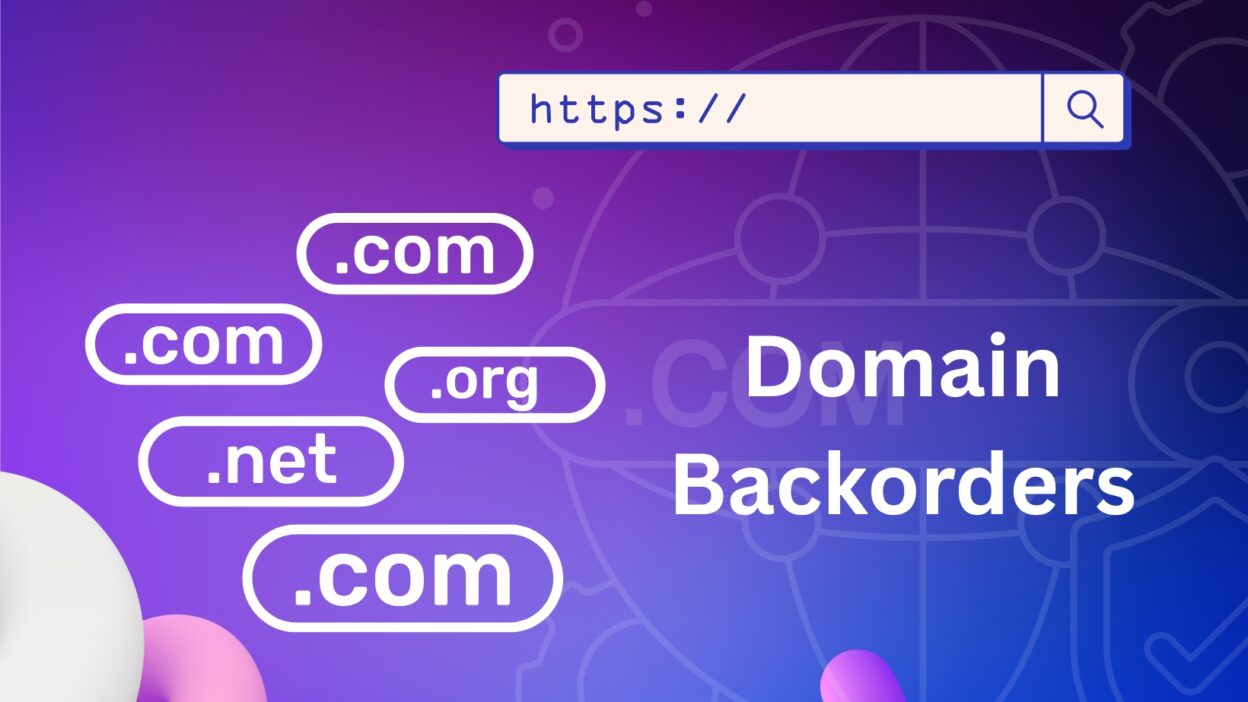Securing the perfect domain name is no longer just a branding decision it’s a strategic investment. In a digital-first world, a premium domain can boost credibility, improve SEO rankings, and even influence consumer trust. But what happens when the domain you want is already taken?
That’s where domain backorders come in a powerful, often overlooked strategy to acquire in-demand domain names the moment they become available.

What Is a Domain Backorder?
A domain backorder is a service that allows you to attempt to register a domain name the moment it expires and becomes available for re-registration. It’s a proactive way to “queue up” for a domain, especially if it’s currently owned but not actively used, or its expiration date is approaching.
Rather than waiting and hoping the domain becomes available, a backorder service monitors the domain and automatically tries to acquire it on your behalf the second it’s released to the public.
Why Domain Backorders Matter
1. Competitive Edge
Desirable domain names, especially those with short keywords, high search traffic, or brand potential, are hot commodities. Backordering gives you a tactical advantage, often placing you ahead of the competition—especially if the domain drops unexpectedly.
2. Cost-Efficient Acquisition
Compared to buying a domain directly from a current owner or via auction, backordering can be significantly more affordable. If the domain is not re-registered or renewed by its current owner, you might secure it at standard registration fees or a nominal service cost.
3. Automated Monitoring
Manually tracking domain expiration dates is time-consuming and unreliable. Backorder platforms use automated systems that monitor and attempt to register the domain the instant it becomes available—giving you peace of mind and higher success rates.
How the Process Works
- Choose a Backorder Service
Reputable registrars like GoDaddy, NameJet, SnapNames, and DropCatch offer domain backordering. Each platform may have slightly different rules and pricing. - Place Your Backorder
Once you’ve selected your desired domain and provider, you place a backorder request. In some cases, you can even backorder domains already on auction or in pending delete status. - Wait for Domain Expiration & Release
Domains go through a series of stages: expiration, grace period, redemption, and finally, deletion. After that, they become available to the public. - Backorder Attempt and Outcome
If multiple users have placed backorders on the same domain, the domain may go to a private auction among the backorder participants. If only you’ve backordered it, you typically win the registration.
Best Practices for Domain Backorders
- Research Domain History: Use tools like WHOIS, Wayback Machine, and SEO analyzers to understand the domain’s past use and reputation.
- Use Multiple Services: Some services have better success rates with certain TLDs (like .com or .net). You can place backorders on multiple platforms to increase your chances.
- Monitor Timelines: Know when a domain is expected to drop. Most domains are released about 75 days after expiration.
- Be Prepared for Auctions: If the domain is in demand, it may go to auction. Set a budget and be ready to bid.
Final Thoughts
In the fast-paced world of domain acquisition, domain backorders are an intelligent, cost-effective strategy for securing valuable web assets. Whether you’re a business owner or a domain investor, this method puts you in a strong position to grab domains that might otherwise slip through the cracks.
Backorders aren’t a guarantee—but with the right tools and approach, they significantly increase your chances of success in a competitive marketplace.



